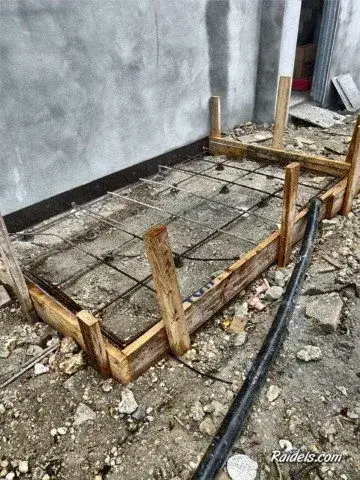Pouring a concrete slab, even a small one, is a significant undertaking in any construction project. It forms the foundation for various structures, from garden sheds to patios. This guide aims to walk you through the process of getting ready to pour a small slab at a construction site, detailing each step to ensure a successful and durable outcome. Alongside practical advice, we’ll incorporate essential knowledge from various resources to enhance your understanding and execution of this task.
Preparing the Site
Site Assessment and Cleaning
The first step involves assessing and preparing the site. It’s crucial to clear the area of any debris, roots, or stones. Ensure the ground is level; if not, it may require some grading. Understanding the site’s specifics, including soil type and drainage, is essential. For insights into soil types and their impact on construction, What Factors Determine the Cost of Concrete Cutting Services provides valuable information.
Marking the Area
Once the site is prepared, mark the area where the slab will be poured. Use stakes and string to outline the slab’s dimensions accurately. This precision is crucial for the following steps.
Creating a Form
Materials and Tools Needed
Building a form requires wooden boards and stakes, typically 2x4s, to create the perimeter of the slab. Tools like a hammer, nails, and a saw will be necessary. For a comprehensive guide on concrete cutting, consider How to Cut Concrete Pipe: A Comprehensive Guide by Concrete Cutting Miami.
Assembling the Form
Assemble the wooden boards to match the marked dimensions, ensuring they are level and securely fastened. The form will hold the concrete in place as it sets, so stability is key.
Base Preparation
Laying the Sub-Base
A sub-base of gravel is recommended for drainage and to provide a stable foundation. Compact the gravel to create a solid base. This step is crucial for the longevity of the slab, as discussed in How Long Does a Concrete Slab Last.
Reinforcement Placement
Reinforcement, such as wire mesh or rebar, should be placed in the form. This strengthens the slab, especially important in areas with heavy loads or traffic. Discovering the Hidden Power of Rebar in Concrete Structures sheds light on the significance of reinforcement in concrete work.
Mixing and Pouring Concrete
Choosing the Right Concrete Mix
Select a concrete mix suitable for your project’s requirements. For small slabs, a standard ready-mix concrete is often sufficient.
Mixing and Pouring Techniques
Mix the concrete according to the manufacturer’s instructions. Pour the concrete into the form, spreading it evenly. Then, use a screed board to level the surface. For tips on achieving a smooth finish, Is It Better to Cut Concrete Wet or Dry? offers relevant insights.
Finishing Touches
Smoothing the Surface
Once the concrete is leveled, smooth the surface with a float. This process helps in creating a professionally finished look.
Curing the Concrete
Allow the concrete to cure properly, which may take several days. Curing is critical for strength and durability. For detailed information on safe demolition practices, including aspects of curing, The Essential Guide to Safe Demolition Practices is a valuable resource.
Maintenance Tips
Pouring a small concrete slab requires meticulous planning and execution. By following these steps and utilizing the resources provided, you can ensure a durable and well-finished concrete slab. Remember, maintenance is key to the longevity of your concrete work. Regular checks and cleaning will help in preserving its integrity over time.

